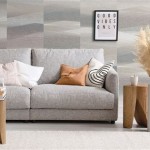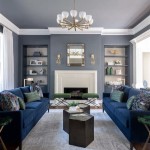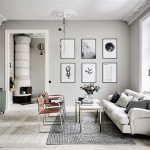Decor Ideas for Long Living Rooms: Maximizing Space and Style
Long living rooms, while offering ample square footage, can present unique decorating challenges. They often feel cavernous, awkward, or simply lacking in a cohesive design. Successfully decorating a long living room requires careful planning and a strategic approach to furniture placement, color schemes, and overall layout. The goal is to create distinct zones within the space, ensuring each area feels functional and inviting while maintaining a sense of flow and unity throughout the room.
This article will explore several decor ideas to transform a long living room into a stylish and comfortable space. These ideas will focus on breaking up the length, defining areas, and maximizing the potential of the available space to create a harmonious and welcoming environment.
Divide and Conquer: Creating Distinct Zones
One of the most effective strategies for decorating a long living room is to divide it into distinct zones, each serving a specific purpose. This approach prevents the space from feeling like a single, elongated area and allows for more functional usage. Clear definition helps to create a sense of intimacy and visual interest within the larger room.
1. Furniture Arrangement as a Divider: The most straightforward method is using furniture to delineate zones. A large sectional sofa can act as a divider between a relaxation area and a dining or play area. Orient the sectional so its back faces the desired separation point. Similarly, a console table or bookcase placed perpendicular to the longest wall can create a visual barrier. These pieces provide storage and display surfaces while effectively dividing the room. Position the sofa or console table to create walkways that allow for easy movement between zones.
2. Rugs as Anchors and Zone Markers: Area rugs are invaluable tools for defining zones. Place a rug under a seating arrangement to anchor the area and visually separate it from other parts of the room. Different textures and patterns can further distinguish each zone. For example, a plush rug in the relaxation area can create a cozy feel, while a flatweave rug in a dining area is more practical and easier to clean. Ensure that rugs are appropriately sized for the area they define. A rug that is too small will make the space feel disjointed, while one that is too large can overwhelm the room.
3. Architectural Elements as Natural Dividers: If possible, consider incorporating architectural elements to enhance the division of space. A partial wall, a decorative screen, or even a strategically placed pillar can create a subtle but effective separation. These elements add visual interest and structure to the room. An open shelving unit, allows light and air to flow through while providing storage and display space, can act as a divider. Consider the architectural style of the house when adding these elements to ensure they blend seamlessly with the existing design.
4. Lighting to Define Zones: Lighting is another crucial element in defining zones. Use different types of lighting to create distinct atmospheres in each area. In a seating area, incorporate soft, ambient lighting with table lamps and floor lamps. In a reading nook, a task lamp can provide focused light. In a dining area, a pendant light fixture can create a focal point and define the space. Layering lighting ensures that each zone is well-lit and visually distinct. Dimmers are also useful for adjusting the light levels to create different moods.
5. Color and Texture as Defining Tools: The use of color and texture can also aid in zone definition. For instance, a vibrant accent wall can highlight a specific area, while neutral tones can be used in the surrounding zones. Incorporating different textures in each zone, such as a textured throw blanket in a relaxation area or a smooth, polished surface in a dining area, can add visual interest and further differentiate the spaces. Consider using a consistent color palette throughout the room to maintain a sense of cohesion while varying the shades and textures to define zones.
Strategic Furniture Placement: Maximizing Flow and Functionality
The way furniture is arranged in a long living room significantly impacts its functionality and aesthetic appeal. Strategic placement can overcome the challenges of the room's elongated shape and create a more inviting and balanced space. Avoiding the common pitfall of simply lining furniture against the walls is paramount.
1. Breaking the Long Line: Avoid lining all the furniture against the walls. This emphasizes the length of the room and can make it feel like a bowling alley. Instead, float some of the furniture away from the walls to create depth and visual interest. This also allows for better traffic flow through the room. Creating conversation areas by grouping furniture together in the center of the room promotes social interaction and makes the space feel more inviting.
2. Varying Furniture Heights: Incorporating furniture of varying heights adds visual interest and prevents the room from feeling flat. A tall bookcase, a low coffee table, and a mid-height sofa create a dynamic and balanced composition. Mixing and matching furniture styles can also add character and personality to the room. Consider the scale of furniture in relation to the size of the room. Oversized furniture can overwhelm a small room, while undersized furniture can look dwarfed in a large room.
3. Creating Conversation Areas: Arrange furniture to foster conversation and interaction. Position seating so that people can comfortably talk to each other without straining their necks. A circular or semi-circular arrangement is often more conducive to conversation than a linear one. Ensure that there is adequate space between seating pieces to allow for comfortable movement. Consider adding a coffee table or ottoman in the center of the seating area to provide a place for drinks and snacks.
4. Utilizing Vertical Space: In a long living room, utilizing vertical space is crucial. Tall bookcases, artwork hung high on the walls, and floor-to-ceiling curtains draw the eye upward and make the room feel more spacious. Vertical elements add height and balance to the room. Consider adding a gallery wall to showcase artwork and personal mementos. Ensure that the artwork is hung at eye level for optimal viewing.
5. Considering Traffic Flow: Careful consideration of traffic flow is essential in a long living room. Ensure that there are clear pathways through the room, and avoid creating obstacles that people have to navigate around. Arrange furniture to guide people through the space in a natural and intuitive way. Consider the placement of doors and windows when planning the layout to avoid blocking access or obstructing views.
Color and Texture: Creating Visual Harmony and Depth
Color and texture play a vital role in creating a visually appealing and harmonious long living room. The right combination can minimize the feeling of length, add depth, and create a comfortable and inviting atmosphere. Careful planning is necessary to avoid overwhelming the space with too many colors or textures.
1. Using Color to Shorten the Room: Using darker, warmer colors on the end walls can visually shorten the room, making it feel less elongated. Lighter, cooler colors on the side walls can create a sense of spaciousness. This color contrast can help to balance the proportions of the room. Consider using a gradient of colors, with the darkest shade on the farthest wall and the lightest shade on the nearest wall, to create a sense of depth.
2. Incorporating Textural Elements: Introduce a variety of textures to add visual interest and depth to the room. Use a mix of smooth and rough textures, such as velvet upholstery, linen curtains, and woven rugs. Layering textures creates a tactile and visually stimulating environment. Consider adding a textured wall covering, such as wallpaper or a decorative plaster finish, to add depth and dimension to the room.
3. Creating a Cohesive Color Palette: Choose a limited color palette to create a sense of unity and harmony throughout the room. A cohesive color scheme can tie the different zones together and prevent the room from feeling disjointed. Use variations of the same color in different shades and textures to add depth and interest. Consider using a neutral base color and adding pops of color with accessories and artwork to create a balanced and inviting space.
4. Using Patterns Strategically: Patterns can add visual interest and personality to a long living room. Use patterns sparingly to avoid overwhelming the space. A patterned rug, a decorative pillow, or a statement piece of artwork can add a touch of visual flair. Consider using different scales of patterns, such as a large-scale pattern on the rug and a small-scale pattern on the pillows, to create a balanced and visually appealing look. Avoid mixing too many patterns, as this can create a chaotic and disjointed feel.
5. Layering Textiles for Depth: Layering textiles, such as throw blankets, pillows, and curtains, adds depth and warmth to the room. Use a variety of textures and patterns to create a visually interesting and inviting space. Consider using different weights of fabrics, such as a heavy wool throw blanket and a lightweight cotton pillow, to create a tactile and visually stimulating environment. Layering textiles is an effective way to add personality and character to the room.
By implementing these decor ideas, a long living room can be transformed from a challenging space into a stylish, functional, and inviting centerpiece of the home. Careful planning, strategicFurniture placement, and a thoughtful approach to color and texture are key to maximizing the potential of the space and creating a room that is both aesthetically pleasing and comfortable to live in.

How To Decorate A Long Narrow Living Room Jamie Lundstrom
How To Designing Your Long Narrow Living Room Interior Design Tips The House
:max_bytes(150000):strip_icc()/decorate-long-narrow-living-room-2213445-04-96b1f74b88d343cba835f6e13fbd50df.jpg?strip=all)
Ideas For Decorating A Long And Narrow Living Room

80 Gorgeous Living Room Decorating Ideas For Every Style
How To Designing Your Long Narrow Living Room Interior Design Tips The House

How To Decorate A Long Narrow Living Room

How To Arrange Furniture In A Long Living Room Setting For Four Interiors

Large Living Room Ideas Practical Solutions For Big Spaces Decorilla Online Interior Design

Long Narrow Living Room Design Ideas Layouts Luxdeco

How To Decorate A Long Narrow Living Room








